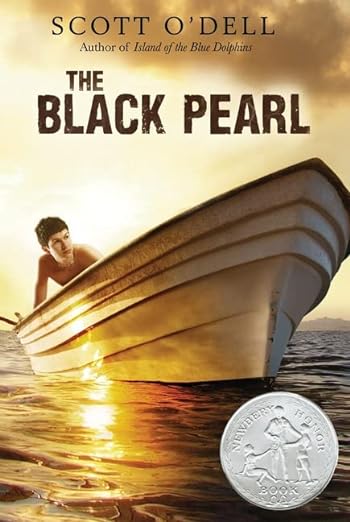I just finished reading The Black Pearl, a Newbery Honor book published in 1967. I’m trying to decide what I think. It takes place in Mexico, Baja California, and it’s very Catholic as would be appropriate for the setting. In the story, which is something of a fairy tale about a boy and the Monster Manta Diablo, the Madonna of the Sea is a direct representative of or substitute for God Himself, which bothers my Protestant brain. But it’s a good and well written fairy tale or folk tale about the dangers of pride and hubris and the mystery of God’s (or the Madonna’s?) will and working in the world.
The protagonist, Ramon Salazar, is sixteen years old and concerned about becoming a man. The coming of age theme is huge in this story. The Black Pearl, or the Pearl of Heavens as it is also named, is something of a MacGuffin, sought, found, given away, stolen, lost again, and replaced, all over the course of 140 pages of the book. The real story is about what’s going on inside Ramon, and his father, and Ramon’s enemy, Gaspar Ruiz the Sevillano. Ramon wants to go pearl diving, something his father has never allowed him to do, and he dreams of finding the largest and most valuable pearl of all, the Pearl of Heaven. (In fact, I think the book should have been called The Pearl of Heaven instead of The Black Pearl, but they didn’t ask me.) Diving for pearls is dangerous, however, and one of the most dangerous creatures in the sea is the manta, also known as a manta ray or devilfish.
We are told that the manta, especially The Manta Diablo, is a huge monster creature that has the power to swallow up an entire ship and that it is a “creature of beauty and of evil whom only two have seen with their eyes.” Ramon tells the reader in the beginning of the story that he is one of the two who have seen The Manta Diablo.
This book reminded me of Steinbeck’s The Pearl and of The Old Man and the Sea by Ernest Hemingway. But the similarities in setting and tone are superficial, I think. It’s been a long time since I read The Pearl. I don’t know exactly what I thin of this one. I sort of liked it. It’s about how the intent of the gift matters. A sacrifice or offering given out of spite and and in an attempt to buy God’s favor is wrong. But a gift given in adoration and gratitude is accepted. That part rings true. I wouldn’t suggest it for middle grade children, but older teens might enjoy puzzling out the meaning of this tale and engaging in the adventure.


